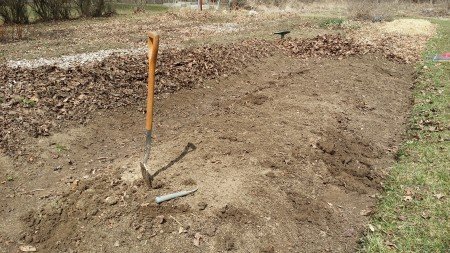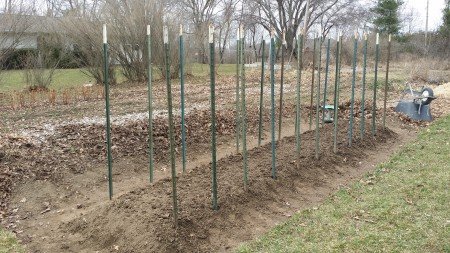Open raised beds lend themselves well to home vegetable growing. A trellised pea planting demonstrates their versatility.
I try to cover my beds with leaves in the fall. The leaves protect the beds during the hard freeze, slow down weed production, and make it easier to get into the garden early in the spring. This picture shows the leaves raked off and any weeds that did sneak through pulled out. I use the leftover leaves as mulch in the paths or I just sweep them into an adjacent bed as I open up the garden. I don’t work the leaves directly into the bed soil. That’s too much work and I think would probably make the soil too acidic as opposed to just letting the leaves break down in the paths.
I’ve added about 20 gallons of compost to my 20 foot long bed. I’ve scraped up some soil from the adjacent paths and raked and smoothed up the bed to give it some height. The trellis system uses T-posts spaced 3 feet apart and 21” between the rows. The trellis lattice is two foot wide fencing cut to 60″ lengths, laced crosswise between the posts with jute. The T-posts are 90” long with about 70” above ground.
Here is the bed with the trellising in place and completely planted. Peas are planted on 2” centers along both sides of the fencing. In between each trellis of peas I’ve planted two rows of greens of various types including collards, spinach, lettuces, radishes and chard. The outside slopes are planted with a dense seeding of cilantro and mustard from saved seed. At both ends of the bed I’ve laid down about a 4” wide strip of marigold seed, saved from last year’s flowers.
I interplant peas like this each year, but this is my most ambitious and structured planting so far. I’m pretty sure I’ll be happy with the results.



